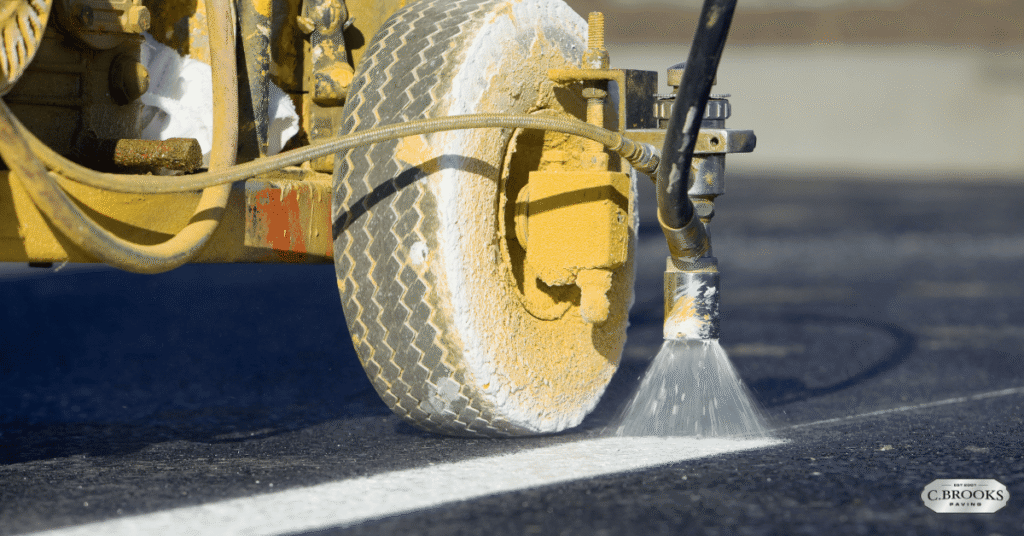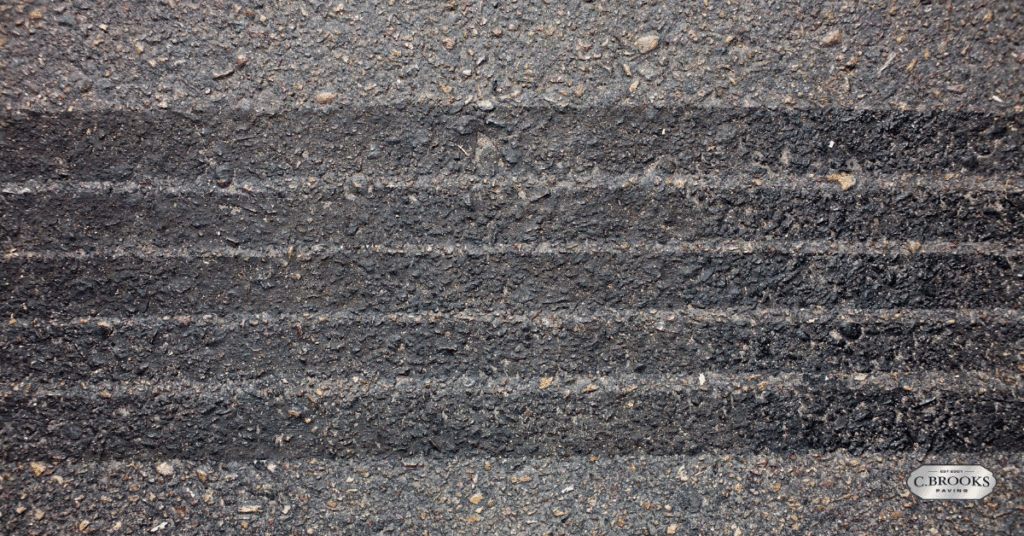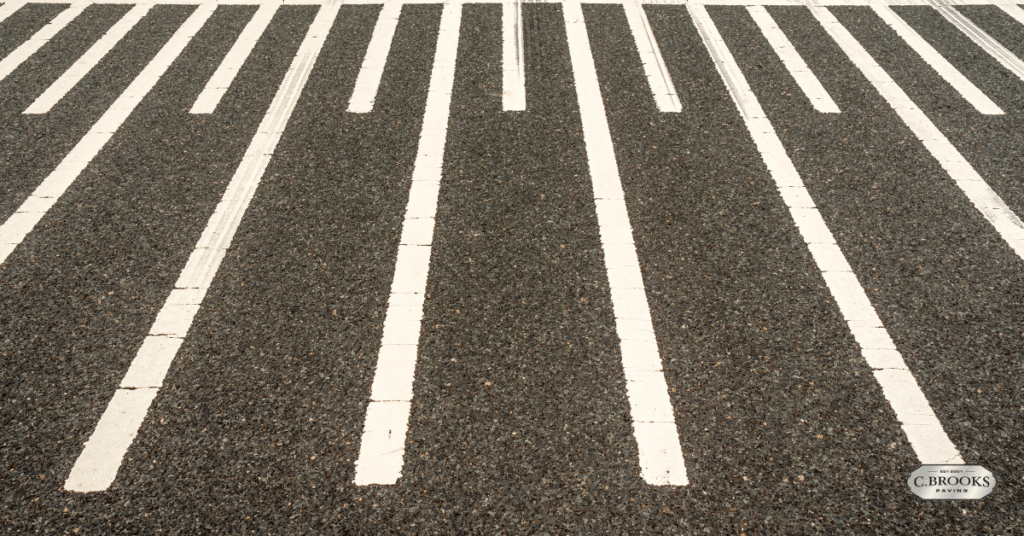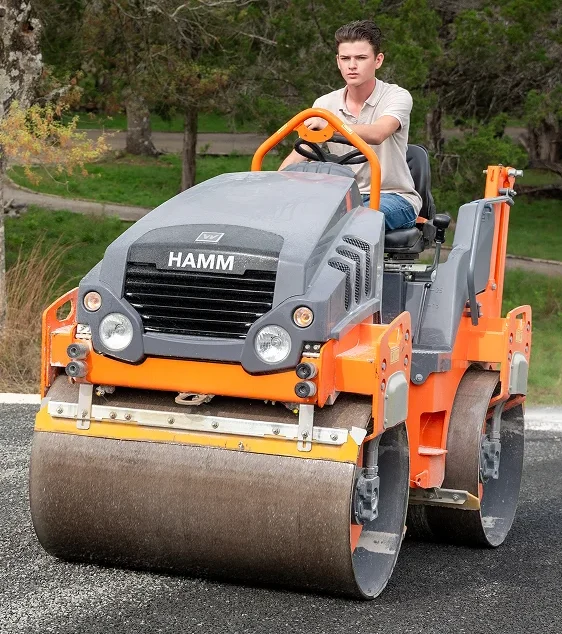Fresh, clear asphalt striping is more than just painted lines. It’s the first thing people notice when entering parking lots, and it directly impacts safety and efficiency, traffic flow, and compliance with local regulations. Proper parking lot striping ensures drivers and pedestrians know exactly where to go, reducing the risk of accidents while improving organization.
Whether you’re managing a business in Bulverde, a residential complex in the Hill Country, or a busy commercial site in South Texas, striping plays a vital role. With four generations of experience, C. Brooks Paving understands how professional striping services keep asphalt surfaces durable, safe, and well-organized. This guide explains the striping basics, from preparation and layout design to paint selection and long-term maintenance.
Why Parking Lot Striping Matters
Well-marked pavement is more than just a neat appearance it serves several important functions:
- Safety and Organization: Clear line markings guide drivers and pedestrians, reducing the risk of accidents.
- Compliance: The Americans with Disabilities Act (ADA) requires specific parking spaces and crosswalks to be properly sized and marked.
- Traffic Flow and Safety: Lot striping techniques like arrows, stop lines, and loading zones improve navigation and reduce confusion.
- Curb Appeal: Freshly painted lines enhance property value and leave a positive impression.
In regions like South Texas, weather conditions and high-traffic areas cause paint to fade over time. Regular re-striping keeps markings visible and extends the longevity of the pavement.
Preparing the Surface for a Striping Project
Cleaning the Asphalt Surface
Striping requires a clean surface. Dirt, oil, and debris prevent paint from bonding. Power washing, sweeping, and thorough cleaning should be done before painting.
Repairing and Sealcoating
Cracks and potholes must be sealed or patched before painting lines, ensuring smooth, straight markings. If sealcoating was recently applied, allow it to cure before beginning the striping job.
Weather Conditions
Schedule striping on dry days when temperatures support proper applying paint and drying. This ensures high-quality striping that resists early wear.

Choosing the Right Type of Paint
The paint used for striping greatly influences durability and visibility. Options include:
- Water-Based Traffic Paint – Quick-drying and eco-friendly, ideal for light-use parking areas.
- Solvent-Based Paint – Stronger and longer-lasting but requires more drying time.
- Thermoplastic – Reflective, long-lasting, and resistant to wear and tear, making it effective in high-traffic areas.
- Reflective Paint – Adding glass beads improves visibility at night.
Using high-quality paint suited to climate conditions ensures striping improves both appearance and function.
Planning Parking Lot Striping Layouts
Proper design maximizes parking facility efficiency.
- Accurate Measurements: Use chalk lines to ensure straight parking lot lines.
- ADA Compliance: Include designated ADA stalls and crosswalks.
- Traffic Flow: Mark lanes, stop lines, and arrows to guide vehicles.
- Parking Lot Design: Choose angled or straight stalls based on space.
- Loading Zones: Mark areas for deliveries or emergency access.
A well-thought-out lot striping plan not only enhances safety but also helps maximize space within parking facilities.
Application and Striping Techniques
- Line Stripers: A professional striping machine ensures precise line striping.
- Line Width: Standard width is 4 inches, but thicker lines may be used in high-traffic areas.
- Multiple Coats: Applying more than one layer increases durability.
- Drying Time: Keep parking spots closed until the paint cures fully to prevent smudges.
These practices ensure consistent results in every striping project.

Common Striping Mistakes to Avoid
- Skipping repair work before painting.
- Using low-quality or incorrect type of paint.
- Ignoring regulatory standards and ADA compliance.
- Allowing traffic before paint cures.
- Poor planning of parking lot striping project layouts.
Maintaining Parking Lot Striping
Regular maintenance extends the life of striping and signage.
- Routine Inspections: Every 6–12 months to check for faded lines.
- Re-striping: Typically required every 1–2 years depending on traffic.
- Cleaning and Repair: Removing old paint, dirt, and debris preserves visibility.
- Sealcoating and Striping Together: Helps maintain a long-lasting finish.
Professional asphalt striping ensures markings meet high standards and remain effective within parking facilities.
Local Expertise: C. Brooks Paving
C. Brooks Paving provides:
- Driveway paving and repair
- Professional striping services for parking lots and large parking facilities
- Chip seal paving for rural roads
- Asphalt maintenance, installation, and resurfacing
Our crews use paint or thermoplastic depending on project needs, ensuring clear markings and reliable striping design that improves safety and efficiency.

Conclusion
Striping plays a vital role in both the look and function of parking lots. From striping basics like cleaning and preparation to advanced lot striping techniques, each step ensures effective parking lot striping that meets compliance and improves safety.
Working with experienced professionals guarantees high-quality striping that lasts, even in high-traffic areas and tough weather. With professional striping services, you can be confident that your striping needs are met with precision and care.





